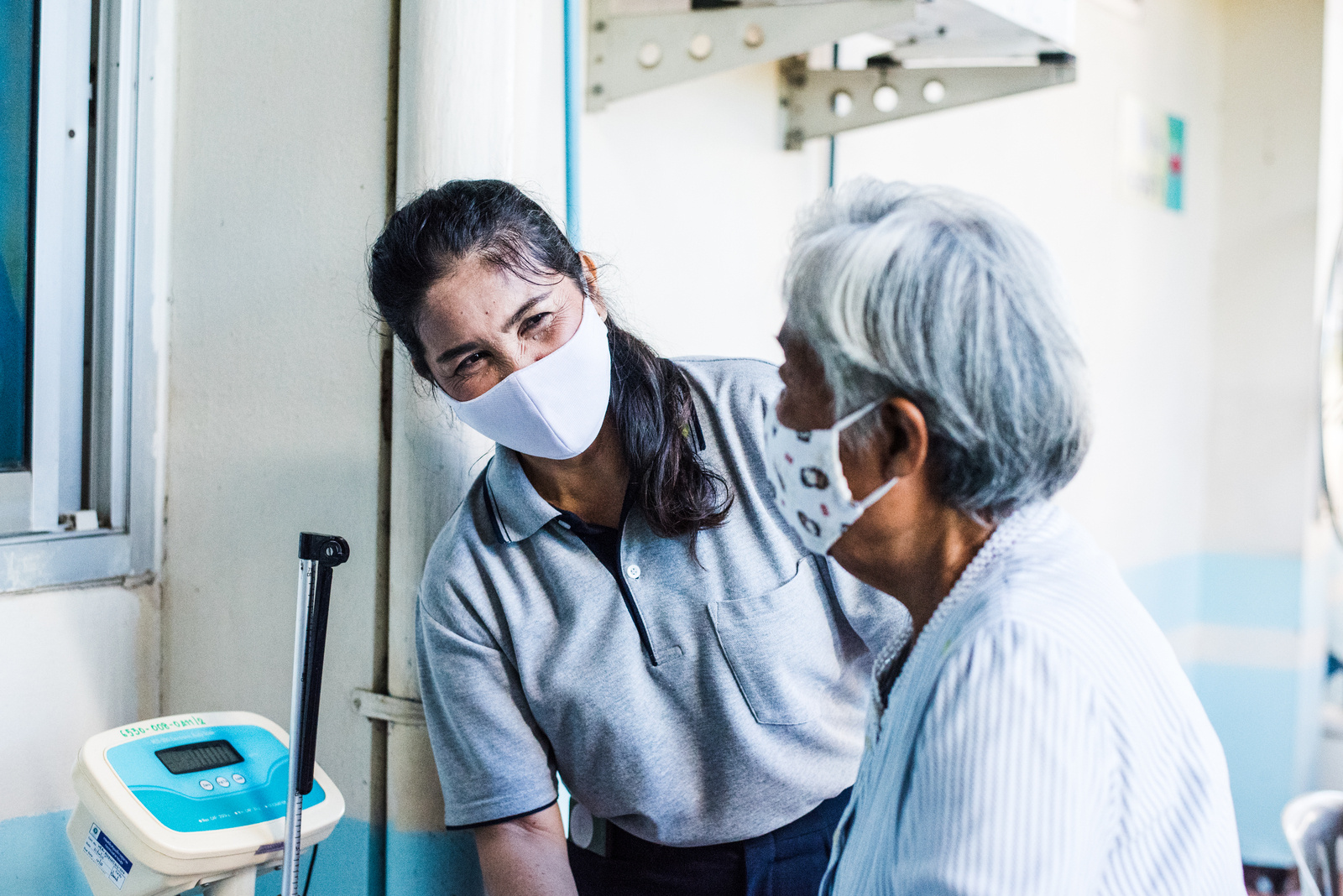Sustainable Financing

Purchasing arrangements to strengthen quality health services for chronic diseases
Background
Improving the quality of care for people with chronic conditions is central to advancing universal health coverage, given the large burden of premature mortality from noncommunicable diseases.
Goal
To describe experiences with purchasing arrangements and payment methods and how they have been used to improve quality and better health outcomes for people with chronic conditions.
Methods
- Scoping review of the literature and other systematic reviews were conducted to identify the effects of payment methods on process quality and outcomes for chronic care.
- Eight case studies were commissioned to describe implementation arrangements for payment methods that reward quality in chronic care in Australia, Canada, Chile, China, Germany, Indonesia, South Africa and Spain.
Key Findings
- A common challenge was balancing the incentives in blended payment methods, i.e. a combination of two or more payment methods.
- Very little information was published about the decisions made to distribute payments across and within teams, which may create uncertainty among health care providers.
- A mix of process and outcomes measures were used in all studies, with a reliance on information collected by existing administrative systems.
- Only two schemes were independently evaluated and peer reviewed, and these evaluations faced important methodological challenges, including selection bias.
- Key facilitating and inhibiting factors included those related to governance, service delivery, quality standards, the health information infrastructure, as well as the financial and regulatory environments.
Global Implications
There is a need to learn from past experiences about the design and evaluation of payment methods, including how lessons learned can be systematically adapted across different country contexts. While proactive learning takes time and effort – particularly across countries and among different stakeholders – it is essential to share experiences to avoid continually repeating mistakes and implementation failures.
Local implications
Relevant initiatives from the Kansai region can further inform these findings including payment for performance initiatives.

Long-term care financing
Background
Extending access and improving quality of long-term care (LTC) services are sound public investments that can result in economic and societal benefits. However, financing long-term care poses challenges. There is a need to better understand how countries can establish financing systems for long-term care to ensure that older people get needed care without falling into financial hardship.
Goals
To produce a series of WHO briefs summarizing the evidence to inform policies and investments financing long-term care in low-and middle-income countries, and a book about the importance of investing in long-term care produced jointly with EURO and the European Observatory for Health Systems and Policy.
Methods
Research is being undertaken to collect evidence to inform the WHO Financing Recommendations for Long-Term Care. The separate research papers will be issued as background papers. The background papers include the gender equity implications of financing long-term care, public finance and budgeting for long-term care, a rapid scoping review of important policy and systems initiatives for long-term care financing, and a review of issues in long-term care financing and implications for low- and middle-income countries. This research will also be informed by WKC previous research quantifying unmet need for care for older persons. This research also builds on work with the EURO observatory for health policies and systems in publishing an investment case for LTC in cooperation with academics globally.

Economic and health financing implications of population ageing in the Western Pacific Region
Background
Population ageing is occurring globally as a result of rising life expectancies coupled with lower fertility and mortality rates.
Population ageing presents economic, public finance and societal challenges. Decision-makers are concerned that population ageing will result in slower economic growth due to reductions in the working age population, and increases in the demands for health and social care, thereby placing fiscal pressure on health and social care systems and on families through caregiving demands. Some of the predicted consequences of population ageing are based on the assumption that, as people grow older, their health and productivity will inevitably decline. However, people have diverse health and functional abilities. In addition, governments have many policy tools to prevent adverse outcomes.
The European Observatory on Health Systems and Policies, in collaboration with the World Health Organization Centre for Health Development (WHO Kobe Centre) and the WHO Western Pacific Regional Office carried out a series of analyses for the Western Pacific Region. The Western Pacific Region encompasses countries with some of the most rapidly ageing populations covering over a third of the world’s population 65 years and older. This number is expected to double by 2050.
Two sets of six country reports cover a diverse mix of countries in the Western Pacific Region. The reports explore how promoting health of older people of working age can benefit the economy. The reports also explore how changes in the age structure of the population will affect future health expenditure patterns.
Goal
- To study the effects of age and demographic structure on health expenditure trends in six countries (Viet nam, Mongolia, Korea, Japan, Australia and New Zealand).
- To study the role of health and disability and how they modify the effects of population ageing on economic outcomes (in the same six countries).
Methods
- For each of the six countries, United Nations population data will be used to quantify the likely contribution of population ageing to health expenditure growth in the future. Each report will explore possible health spending by age profiles using actual country data, where available.
- For the six countries, regression analysis will be used to estimate the links between health and disability at older ages and economic output, labour force participation and/or other related indicators. Publicly available data will be used from the International Labour Organization (ILO), Institute for Health Metrics and Evaluation (IHME), and the World Bank. We will develop short country reports based on the findings from these models, applied to country-specific data and scenarios.
Global implications
Simulations predicted that improvements in health among people of working age could lead to increases in the growth of GDP. These results were observed for simulations carried out in several different country contexts. Taken together, the reports indicate that there are many opportunities for people to age in good health and that healthy ageing can contribute to the economy.
Local implications
Evidence from Japan similarly find that healthy ageing promotes economic growth. Initiatives currently being undertaken in Kobe City and Hyogo prefecture to promote healthy ageing as a means to contribute to the local economy are well-founded.

Sustainable health financing with an ageing population
Background
With population ageing and higher health expenditures among older persons, policy-makers may assume that ageing will result in unconstrained growth in health spending. Population ageing may also affect a country's ability to generate revenues for health, depending on how revenues for health are generated. WHO WKC partnered with the European Observatory on Health Systems and Policies as part of their Economics of Ageing Paper Series and the WHO Health Financing Team to study the impact of shifting age demographics on health care expenditure trends and the ability to finance health.
Methods
Using data from the European Union (EU), Japan, and Indonesia, we simulate the effects of population ageing on the ability to raise revenues for health from income taxes, goods and services taxes, property taxes, and social contributions. We then use data from the European Union to study health expenditure patterns by age and population projections. We develop a series of hypothetical scenarios to simulate increases in volume, prices, intensity, and coverage of services for older persons.
Results
For countries with a relatively younger population currently undergoing a rapid population age-structure transition, all revenue sources have the potential to grow considerably over the medium- to long-term. The challenge is to improve tax collection and the priority given to health to take advantage of this potential. For countries with a large share of the population at older ages, revenues from social contributions linked primarily to the labour market are expected to decline substantially as a result of population ageing. We also find that health spending growth attributable to population ageing adds less than one percentage point to per person annual growth through 2060. Even under the most extreme hypothetical scenario, in which there are increases in volumes, prices, intensity, and coverage of services for older persons, the growth in health spending for EU countries is 0.85 percentage points higher than what would be expected from population ageing alone; 1.0 percentage point for Japan, and 1.67 percentage points for Indonesia.
Global implications
This research underscores the importance of moving away from financing health through labour-related contributions and premiums and, as a result, de-linking entitlement to care from the payment of contributions. Population ageing alone will not be the major driver of growth in health expenditures. Policy choices play the key role, including how services are financed and delivered, the prices paid for services and medicines, and how coverage decisions are made.
Local implications
Even under the most extreme hypothetical scenario, in which there are increases in volumes, prices, intensity, and coverage of services for older persons, the growth in health spending for Japan 1.0 percentage points higher than what would be expected from population ageing alone. This research suggests that ageing is not the major determinant of increases in spending as the population ages; however policies implemented by the regional and local government are critical to address expenditure growth while supporting the revenues needed to provide care for older adults.

Pricing long-term care for older persons
Background
Implementing universal health coverage (UHC) implies ensuring access and financial coverage for care for older persons. In Phase 1 of this research on pricing health care services, we found very different systems in place for financing and access to benefits for services for older persons in comparison with health services. Phase 2 focuses on the organization and financing of long-term care services, and the systems in which services are priced, organized and delivered.
Methods
Nine country case studies were commissioned, representing a range of health care systems, experiences in purchasing and price setting, and the commitment to improve financing mechanisms to attain broader policy goals. Each case study describes the organization, coverage, financing and entitlement for facility-based health care, home-based care, residential care and personal care for older persons. The case studies describe long-term care financing, pricing long-term care services, and the policies in place to ensure fiscal sustainability and provide financial protection.
Findings
The summary report distils lessons learned from the case studies in long-term care financing and price setting and draws policy lessons to drive country action, particularly in low- and middle-income settings. The report concludes that:
- Public investments in formal LTC systems are important because of population ageing and declines in the availability of family caregivers, many of whom are women.
- The overall objectives of a given LTC system will have an influence on how care is organized and financed in that system.
- A separate funding stream may help ensure that LTC funding is not diverted to other purposes, promotes transparency in management; however, the separation of funding for LTC and health care may pose problems in coordination across health and social care.
- Funding to LTC should be linked with need and the care provided; all of the countries studied use objective needs assessments to determine eligibility, and link prices and payments with health and social care needs.
- Where cost control is the primary objective and eligibility criteria are stringent, unmet needs may emerge. Therefore, needs assessment systems should be monitored to ensure that they enable access to needed care. Similarly, systems of user charges should be formally evaluated as to whether their application results in reduced utilization and unmet need.
- Funding to LTC to should be based on a secure reliable source that reduces any regional inequities in resources available.
- Price adjustments and add-on payments could be used more broadly to foster equity in provider payment.
- Quality measurement in LTC is an important area requiring further policy development, which can be linked to price levels and payment mechanisms.
Global implications
Lessons learned from countries with mature long-term care systems can be an important resource for middle- and low-income countries, who are facing the challenges of providing appropriate quality health and social care for older populations. An important lesson is that formal investments in financing public LTC are important because of the increased demand for these services with population ageing, and the declining availability of informal caregivers.
Local implications
The case study from Japan provides important lessons learned for other countries, including the need to consider sustainability in the design of LTC, monitoring the eligibility criteria, enabling informed choice and monitoring equity in access.

Price setting in health care: implications for Universal Health Coverage
Background
In implementing universal health coverage (UHC), policy makers should decide who is covered by public benefits, what services are covered, and how much will be paid. With increases in public spending towards UHC, countries are paying more attention to value for public spending, and the decisions about how to channel funding and organize services to respond to people’s needs. Pricing policies are closely linked with the decisions about the benefits package, how to pay health care providers, and how to harness resources from the private health care sector. However, the process of setting and negotiating prices is poorly understood.
Methods
Nine country case studies were commissioned, representing a range of health care systems, experiences in purchasing and price setting, and the commitment to improve financing mechanisms to attain broader policy goals. Recognizing that no single model is applicable to all settings, the study aimed to generate best practices and identify areas for future research to support countries, particularly in low- and middle-income settings, to increase access and affordability and meet international commitments towards Universal Health Coverage.
Results
The ways of calculating prices depend on the strength of data collection systems about expenditures, volumes, and outcomes. Unilateral price setting has generally performed better in controlling price levels, avoiding price discrimination, and providing incentives for quality. Pricing has been used to control volumes and promote quality, for example, through reductions in prices for repeated unplanned outpatient visits, hospital admissions, and sentinel events. Prices have also been adjusted to attain broader public health goals, by making price adjustments for rural and remote facilities and for facilities treating high numbers of low-income or high-cost patients.
Global implications
The overall pricing framework should be set in a transparent way. Several countries have established independent institutions to oversee and manage this process. Investing in data infrastructure is critical. Systematic testing and evaluation is needed to inform policy. Lessons from other countries should be evaluated based on their feasibility to unique country contexts including the regulatory environment and institutional capacity.
Local implications
Japan has extensive experience in price setting for health care services, which has been successful in containing health care costs. The case study for Japan provides important lessons learned for middle-income countries who are determining how to set prices for health care services.

